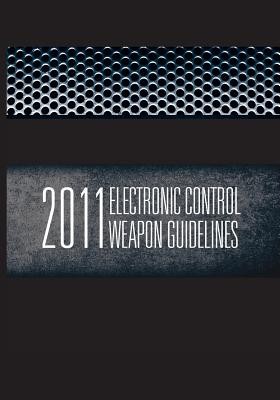| 2011 Electronic Control Weapons Guidelines Contributor(s): Policing Services, Office of Community O (Author), Justice, U. S. Department of (Author) |
|
 |
ISBN: 1477675752 ISBN-13: 9781477675755 Publisher: Createspace Independent Publishing Platform OUR PRICE: $16.14 Product Type: Paperback Published: June 2012 |
| Additional Information |
| BISAC Categories: - Law | Government - State, Provincial & Municipal |
| Physical Information: 0.13" H x 7.01" W x 10" (0.27 lbs) 62 pages |
| Descriptions, Reviews, Etc. |
| Publisher Description: In 2005, the Police Executive Research Forum (PERF), with support from the U.S. Department of Justice Office of Community Oriented Policing Services (COPS Office) produced a set of guidelines for the use of Conducted Energy Devices (CEDs). Many law enforcement agencies adopted the guidelines. In the years that followed, however, new information became available about how the weapons were being used, and controversy about CED safety continued. In 2010, PERF again received support from the COPS Office to revise the 2005 guidelines to reflect the most up-to-date knowledge regarding CED use and safety. In the updated guidelines that follow, we changed the name of the weapons from CEDs to Electronic Control Weapons (ECWs) to reflect the reality that these tools are less-lethal weapons that are meant to help control persons who are actively resisting authority or acting aggressively. ECWs are a popular tool among police and are increasingly being used in law enforcement agencies across the United States. Thousands of American police agencies have purchased ECWs for their officers, and industry representatives report that more than 15,500 law enforcement agencies in more than 40 countries are using ECWs (TASER 2010). The rapid adoption and deployment of ECWs by law enforcement during the past five years have been accompanied by a number of benefits and controversy. Regarding the latter, a number of deaths have occurred proximate to the use of ECWs, resulting in concern about the limitations of the weapon. As a result, a significant amount of research has been conducted during the past several years by medical experts and other professionals to assess the injury risks associated with the use of ECWs. At the same time, police departments have reported that overall injury rates among suspects and officers have declined since they started using ECWs. In fact, PERF completed a study for the National Institute of Justice that found empirical support for those claims (Taylor et al. 2009). Even among law enforcement agencies that adopted either the 2005 guidelines or similar policies that impose limits on the circumstances in which officers should use ECWs, some agencies are still considering whether they should further restrict their officers' use of these weapons in light of other developments. In 2009, TASER International, Inc., the leading manufacturer of ECWs, issued a training bulletin changing the recommended target area for ECWs away from the subject's chest. This advisory prompted police agencies to revisit their policy and training guidelines for ECW use. Court decisions also have caused agencies to continually review their policies, training, and oversight of ECWs to stay up-to-date with developments in the field. |